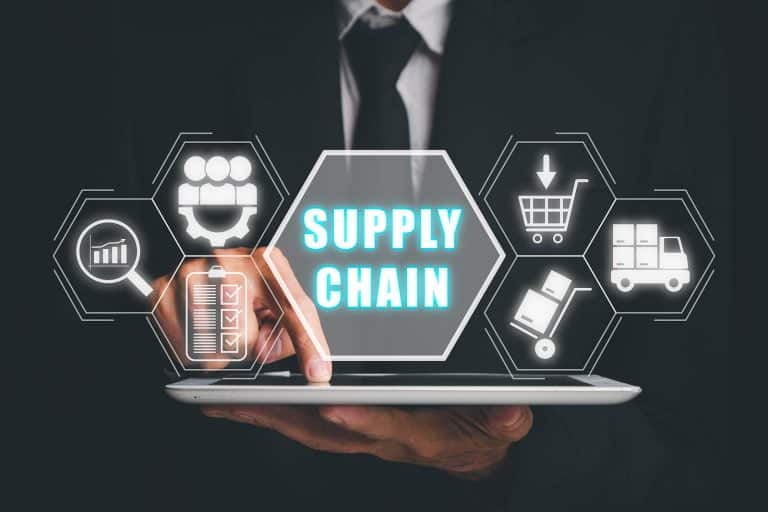Blockchain is most well-known as the underlying technology that enables cryptocurrency, but its potential goes far beyond crypto. One of its most beneficial applications is in supply chain management. If applied effectively, blockchain improves supply chain transparency in virtually every area.
Table of Contents
ToggleAs COVID-era disruptions linger and consumers demand more ethically and sustainably sourced products, supply chain transparency becomes increasingly crucial. Implementing blockchain tracking solutions could help organizations gain this visibility.
Preventing Fraud
One of blockchain’s greatest strengths for supply chain management is its immutability. Once a chain verifies a transaction, the record of that exchange remains firmly locked into place. To change these records, a user must alter the cryptographic hash of all subsequent blocks in the chain, making it almost impossible to tamper with this data.
This immutability ensures no party — whether a cybercriminal or an organization trying to cover up its actions — can defraud supply chain records. That is a substantial improvement over most of today’s supply chain management systems.
Supply chains are complex systems involving many parties with limited communication and control over one another. In a conventional tracking system, it is easy to say a product came from one company or location when it really did not. Using unchangeable blockchain records to track materials and products prevents this fraud.
Improving Material Traceability
Blockchain’s immutability means this technology can offer more reliable insight into where raw materials come from. Blockchain tracking systems automatically generate a record of origin when materials enter a supply chain, then create new records as they change hands throughout the logistics process.
Every time a transaction happens in the supply chain — like a new location scan or payment to a company — it creates a new block in the chain. As a result, organizations can look to their blockchain to see a comprehensive record of how their materials got to them. This traceability makes it easier to ensure they sell truly ethical or sustainable products.
Retailers can use these records to see where their goods really come from, letting them switch suppliers if necessary. Similarly, they can get a complete picture of their logistics process, showing where they may contribute to carbon emissions or other environmental issues.
Making Supply Chain Data Accessible to Consumers
Another way blockchain improves supply chain transparency is by offering this same insight to consumers. Non-fungible tokens (NFTs) use blockchain technology to verify ownership and transaction history. That, in turn, allows end-users to track products from creation to sale if companies implement unique NFTs for each product.
These NFT tracking solutions highlight another of blockchain’s strengths for supply chain management — accessibility. Blockchains are organized by design and blocks are easily viewable by anyone with access to the chain. That makes them ideal tools for promoting openness with customers.
Without a system like this, consumers would have to take organizations at their word that they are honest about their sourcing and logistics processes. Using a decentralized, immutable verification system helps boost transparency with the public, building consumer trust.
Creating a Single Source of Truth
Blockchain’s accessibility can also help the various parties within a chain keep pace with one another. Traditional supply chain management systems may use several systems to manage multiple aspects of the network. Financial, inventory and information exchanges are separate, but this can result in knowledge gaps for some parties, introducing more room for error.
Blockchain prevents these errors and miscommunication by providing a single source of truth for all stakeholders. All transactions register on the same chain regardless of the type or involved pirates. Consequently, businesses can easily see even transactions that do not involve them, providing a complete picture of the supply chain.
Because blockchains are decentralized, organizations also do not have to worry about bias or interference that may hinder their insight. All supply chain stakeholders can see the same information, enabling much more cohesive, reactive logistics networks.
Enabling Automatic Compliance
Smart contracts are another way blockchains improve supply chain transparency. These programs execute automatically once certain conditions are met and have several use cases within the supply chain. One of the most helpful for clarity is automatic regulatory compliance.
Laws like 2021’s Uyghur Forced Labor Prevention Act may require some organizations to prove their sourcing operations meet certain regulatory restrictions. Smart contracts could automatically compile and share records relating to these regulations when a product enters the supply chain or reaches its final destination.
These automatic audits would make it far easier for companies to comply with increasing government regulations. It would also save regulatory agencies time and effort, letting them get more out of their resources.
Blockchain Improves Supply Chain Transparency on Every Front
Supply chain transparency is crucial for organizations today, making blockchains an increasingly promising technology. Organizations should seriously consider implementing it as it improves and becomes more scalable.
Blockchain-driven supply chain management can give businesses a competitive advantage today. However, as its benefits become more evident and its adoption rises, it could become a necessity.




